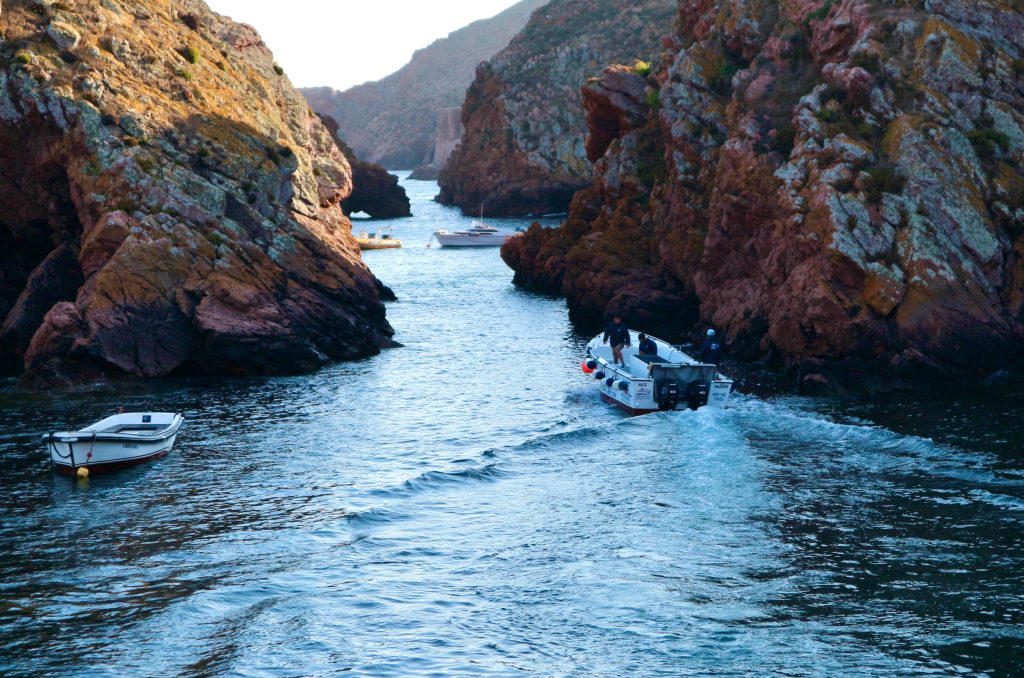Cruising far out into the Atlantic Ocean from an ancient former rocky island with the descendants of Portuguese navigators.
From the 15th century onwards, Portuguese navigators travelled the oceans to strengthen the small kingdom’s struggling economy through trade and colonisation. Especially in the 16th century, this expansion led to Portugal’s greatest prosperity, at the expense of the quality of life of countless people in colonised countries. The outstanding technical achievements, most of which were achieved under the rule of Prince Henry the Navigator at the beginning of the 15th century, gave the Portuguese navigators an extensive knowledge of seafaring. Until the 16th century, they were considered the leading trading and maritime power. Even today, the Portuguese like to look back on this period, as Portugal’s renown in that era could never be matched.
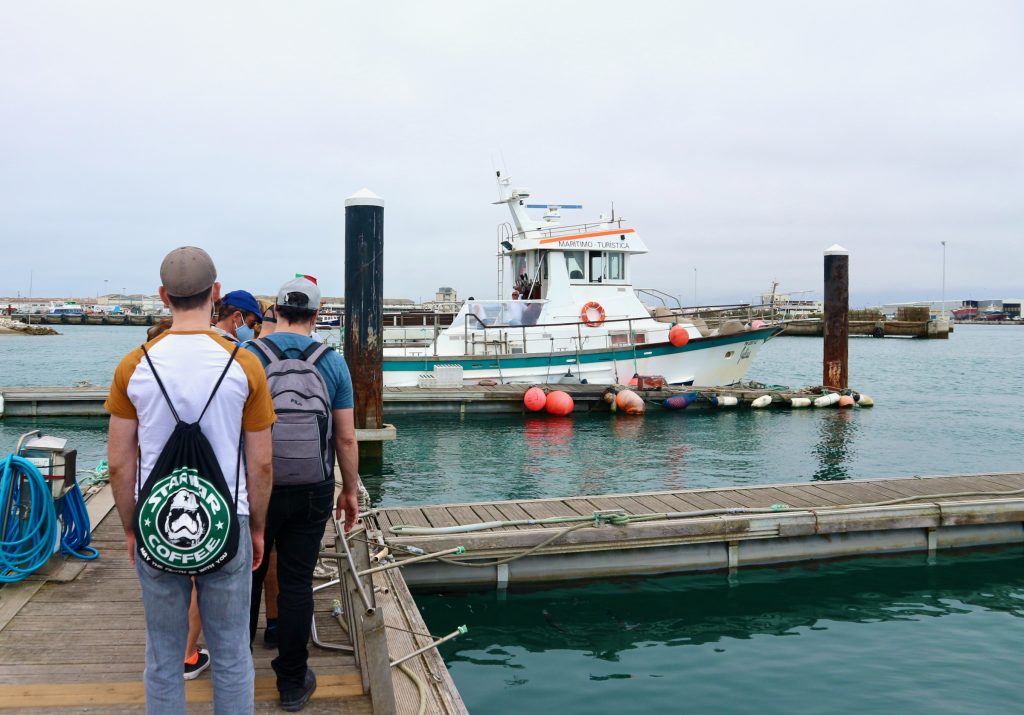
During all of our travels through Portugal, we always come across relics of this time. Be it the beautiful monasteries and palaces built in the Manueline style, where you can still read the stories from the time of the voyages of discovery with fantastic imagery, or the numerous monuments of the great explorers, which can be found throughout the country. Last but not least, the Padrão dos Descobrimentos in Belém, where Portuguese fascism under Salazar commemorated this great era in Portugal in the 1960s.

With such a highly developed maritime industry, it is relatively hard to find a way to sail the omnipresent Atlantic Ocean, as most of the Portuguese islands, namely the Azores and Madeira, with its little sister islands of Ilhas Desertas and Porto Santo, are far too far away from Portugal to be reached by ferry. Close to the mainland, there are actually hardly any islands apart from the smaller islands of the Algarve, e.g. Ilha da Armona and Ilha da Culatra, to which you can make a noteworthy boat trip. An exception is the Berlengas, which rise out of the ocean about 9 kilometres off the wild rocky coast of Peniche and which are permanently inhabited by very few people.

Since the forty-minute crossing from Peniche is often associated with astonishing swaying, even in summer, many locals have never or only rarely cruised the Berlengas. On the other hand, the wavey sea invites many surfers to visit the beaches around Peniche. For us, the crossing on a relatively beautiful day in August was an uncomfortable experience filled with seasickness. However, our children felt comfortable and enthusiastically watched the rock formations of the Peniche peninsula gliding by. These are due to the fact that Peniche already existed as an island when the present mainland did not even exist. Only in the Middle Ages did Peniche slowly become a peninsula (at low tide), and from the 18th century onwards it was finally connected to the mainland.

While the children finally slept and the adults stared tormentedly ahead, I fixed my gaze on the horizon and could thus prevent seasickness from taking hold of me too. Then, we eventually reached the main island of Berlengas, we caught sight of Fort São João Baptista and finally landed at the small but surprisingly busy port of Porto da Berlenga, built in a ravine-like bay on the quieter eastern side of the island. The children, brought back to life, then stormed along the small paved path over bridges and past a grotto to the only beach on the island, which is surrounded by steep cliffs and which awaited us very idyllically at the end of the gorge. The sand here is wonderfully fine-grained, and the access to the sea is very shallow. You can see fish in the water, and from here you can easily swim or snorkel in the surrounding caves. However, the proximity to the harbour requires extra attention.

Above the beach, a steeply rising path leads to the campsite. Unfortunately, it is closed this year due to the Corona pandemic. Otherwise, we imagine we would have made a very idyllic overnight stay up there above the ocean and close to breeding seagulls. The light of the lighthouse glides over the slopes from time to time, and all you can hear is the ocean and the seagulls. However, I heard from a friend that in summer not only the many young people from the surrounding areas who come here for loud camping parties, but also the black rats who climb up the tent walls at night and happily slide down again can ruin the idyllic atmosphere.
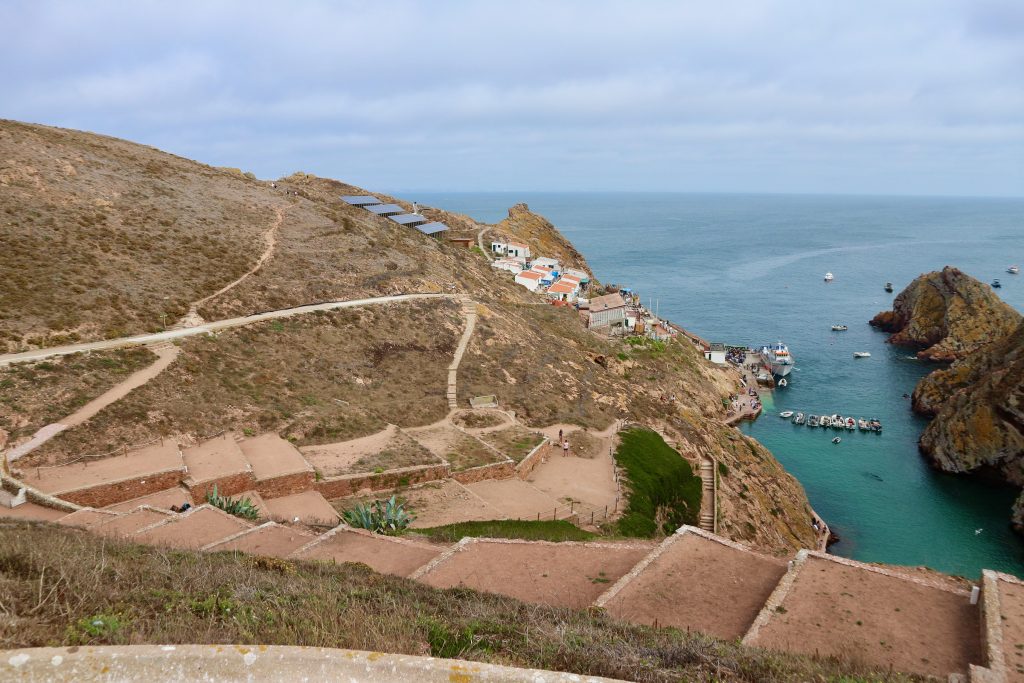
We walked on to the small bar above the harbour in the only village on the Berlengas with a nice terrace and an attached mini supermarket: Castelinho Micro Market. There is also a restaurant here, Mar e Sol, which has a good reputation and is not supposed to be very cheap, but it is also closed this year. It is located on the site where a convent of the Jerónimo Brotherhood was built in 1513 with the support of the then-Queen Leonor de Avis to look after the many victims of the shipwrecks on the Berlengas. However, it was attacked so frequently by pirates and corsairs that it had to be abandoned just a few decades later.
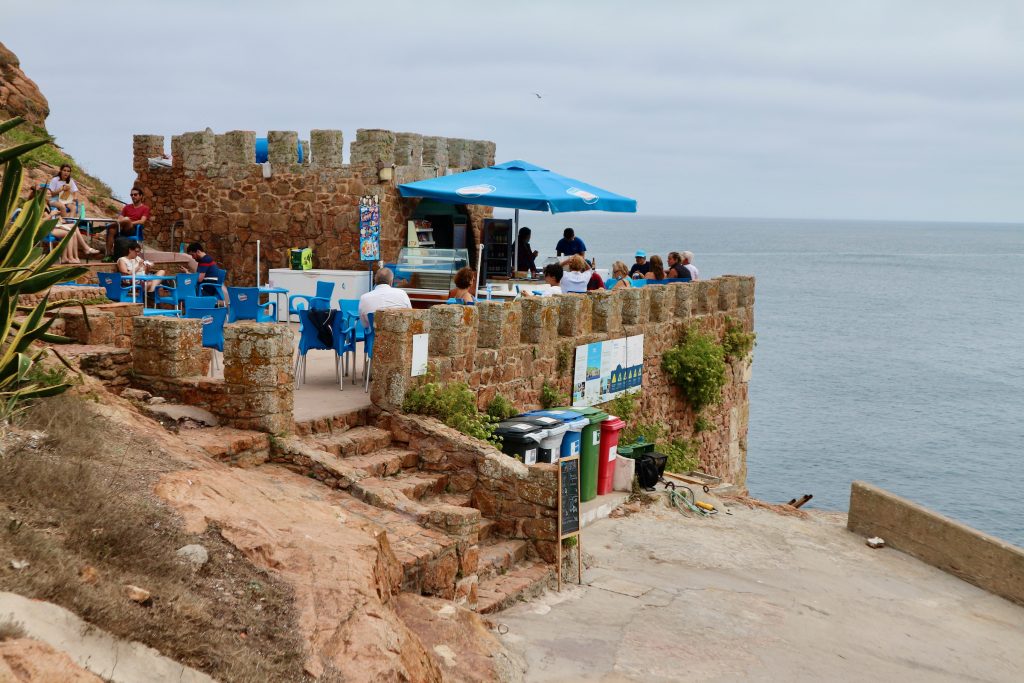
We then headed towards the lighthouse and Fort São João Baptista. A pleasant path with a great view, past nesting seagulls and gecko lizards that flit away again and again lead up the slope. Signs warned against leaving the paths and getting too close to the gulls, as they seemed to know how to defend themselves vigorously. Cormorants flew above us, but unfortunately we did not get to see the small murres, which resemble penguins and are the heraldic animal of the nature reserve. We also didn’t see any wild rabbits, for which King Don Afonso V had the whole archipelago declared a protected area in the 15th century so that the aristocracy could hunt them here at will.
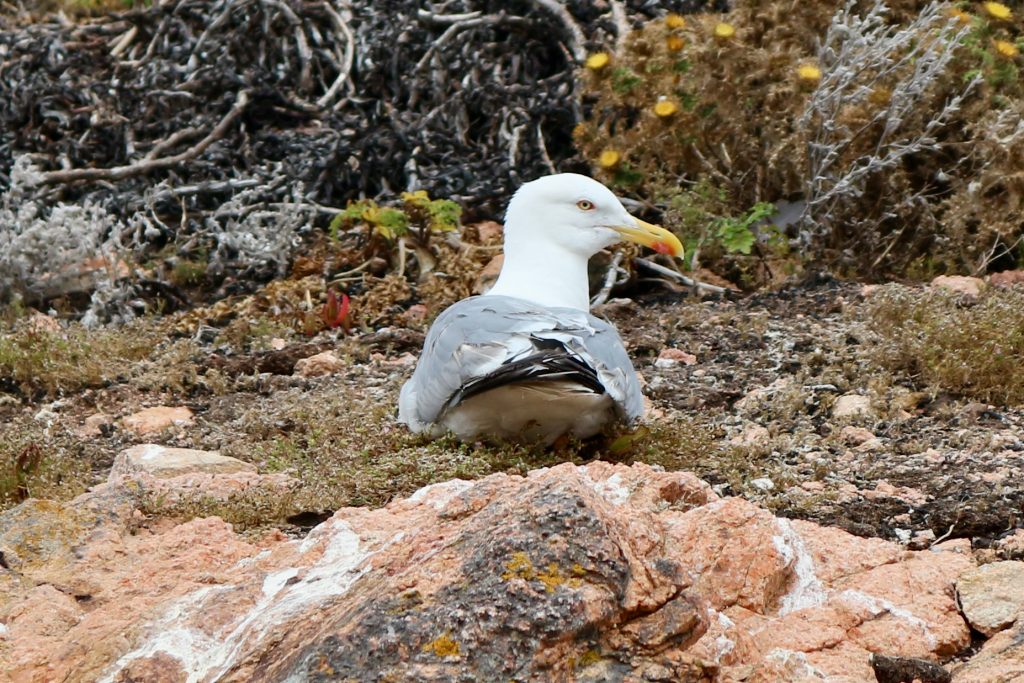
The lighthouse, which has been completely converted to solar operation, is apparently also open to visitors, but it was closed when we passed it. Shortly afterwards the descent to the fort began. Unfortunately this is not without danger with younger children. The view down to the small island where it was built from the stones of the former monastery and the simple bridges connecting it to the main island is like a fairy-tale – almost unreal.

The fort, built in 1655, has proven very resistant many times. As early as 1666, when Spain wanted to kidnap Princess Dona Maria Francisca de Sabóia, who had just been married to King Afonso VI in France, 28 Portuguese successfully fended off a huge superior force of Spaniards from Cadiz from the fortress above ground, and perhaps it was only because of the betrayal of a defector who told the Spaniards that the ammunition of the Portuguese was almost exhausted that the fortress was finally taken. However, the kidnapping of the new queen was successfully averted.
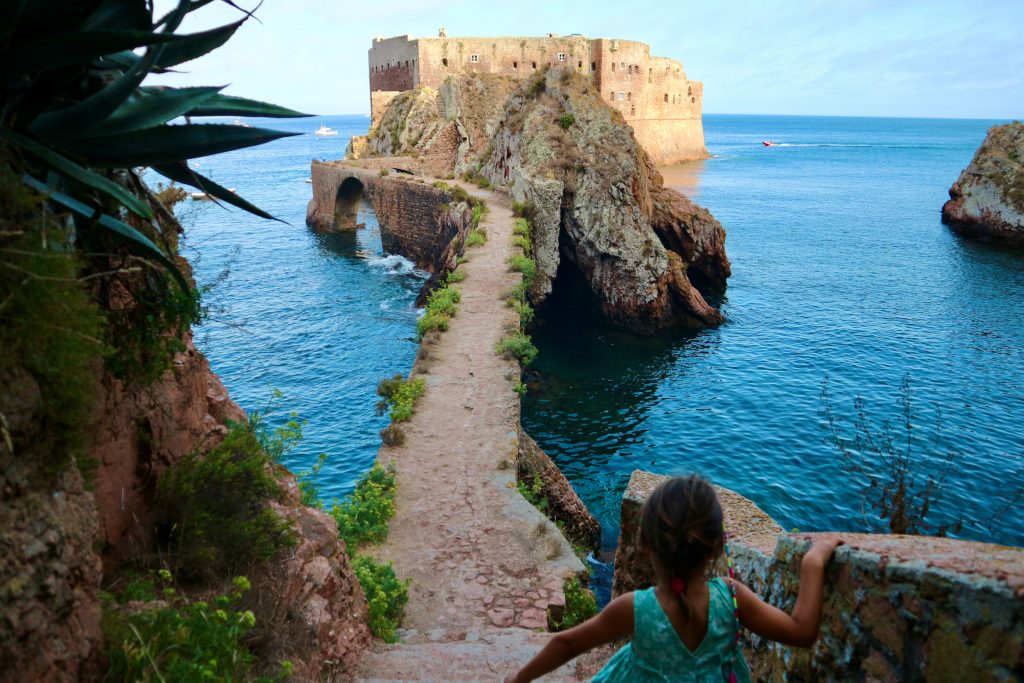
Today, the fort houses a guesthouse, which is run by the Associação Amigos das Berlengas. You can stay there very cheaply in simple double or multi-bed rooms, which all offer a view of the ocean. The fort also has a mini-market and a simple café where you can get basic meals from time to time. The courtyard is magical, the roof is walkable and the whole fort is certainly worth a longer stay. The whole complex looks very rustic, but in a certain way very authentic, and you can wonderfully feel the eventful past and the loneliness of the island.
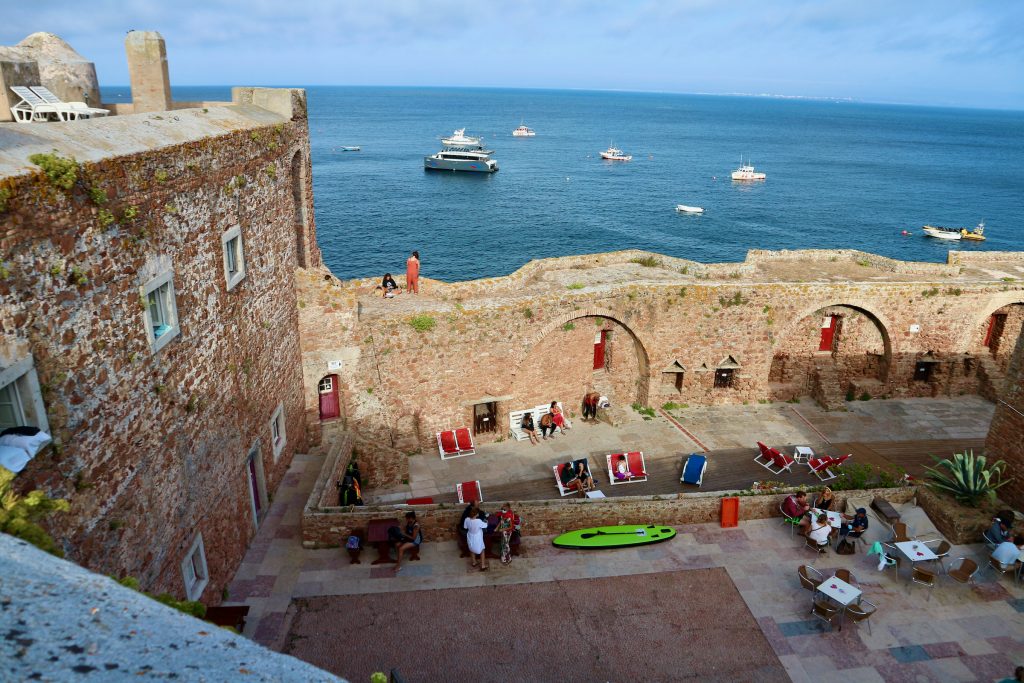
Visiting the Berlengas is certainly one of the most outstanding family adventures in Portugal. The island has reminded me of the Galapagos Islands. We felt right in the middle of the maritime nature of the Atlantic Ocean. And at the same time, Portuguese history was within our reach. Berlenga Grande is one of those wonderful islands where no road traffic disturbs the peace and quiet, and you and your children can go for a relaxing walk anywhere. However, there are countless unpaved chasms, so you must at least take care with your younger children.
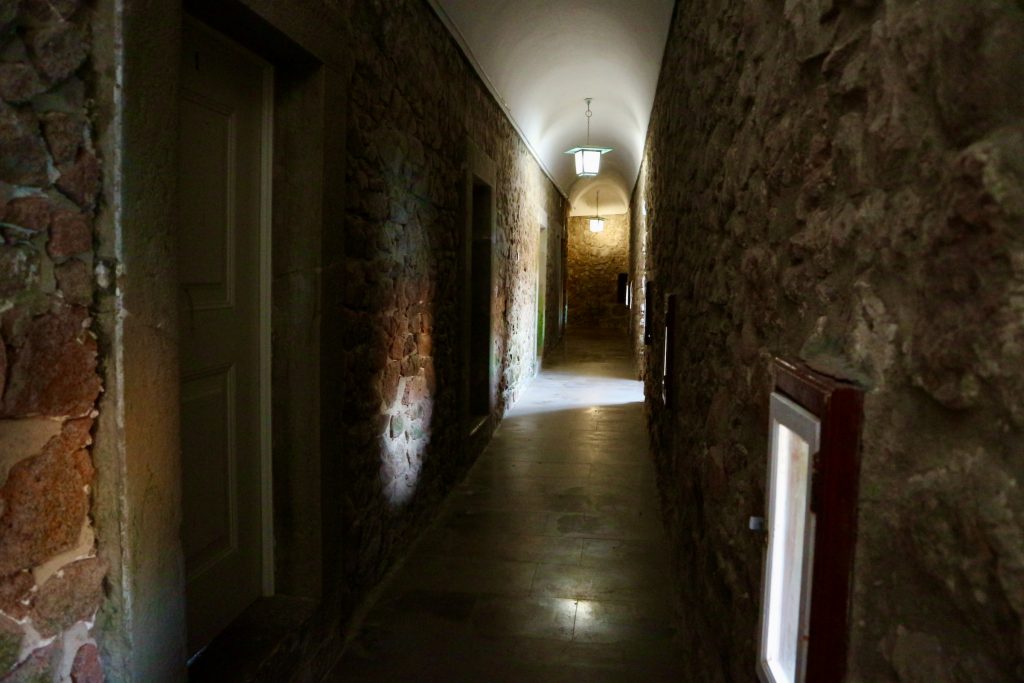
If you can stay overnight, there are many possibilities to explore the island even more intensively. Glass-bottom boat tours are offered, you can swim into the caves, row a kayak, or take a leisurely boat ride. It’s a great place for snorkelling, because there is a great variety of sea animals around the Berlengas, including dolphins and beaked whales.

Weather conditions:
In Peniche, the weather is almost always cloudy and cool. On the Berlengas, however, the weather is often slightly better. Nevertheless, you should definitely bring warm clothes for the crossing. Swimsuits and additional changes of clothes are also recommended, because on the crossings in the smaller boats you can quickly get a damp seat.
Passage:
Small boats take about 40 minutes, fast boats 25 minutes, the latter are recommended because of the shorter crossing time. You should definitely book the boats the day before, as in summer all boats are quickly booked up.
GPS Port: 39.353177, -9.378782
Parking facilities are available, partly also for mobile homes.
Provider:
viamar-berlenga.com/en/
www.feelingberlenga.pt
berlengatours.com
Crossings are only possible between June and September.
Exploring the islands:
In view of the lack of shopping facilities, you should bring enough food and drinks with you. A pram is not recommended, a sling for smaller children is definitely recommended.
Accommodation:
Fort São João Baptista: Associação Amigos das Berlengas
Facebook: facebook.com/aaberlenga
Email: berlengareservasforte@gmail.com
Phone: +351 262 750 244 / +351 910 246 232
Camping Berlenga Grande
Email: campismo.berlenga@cm-peniche.pt
Phone: +351 262 789 571
Bed & Breakfast:
Mesa da Ilha e Berlenga Bed & Breakfast
Facebook: facebook.com/Mesadailha/
Email: berlengabedbreakfast@gmail.com
Phone: +351 262 148 099
Phone: +351 969 395 763
Bed & Breakfast:
Pavilhão Mar e Sol
Restaurant and 6 comfortable rooms
Email: restaurantemaresol@gmail.com
Phone: +351 262 750 331 / +351 919 543 105
